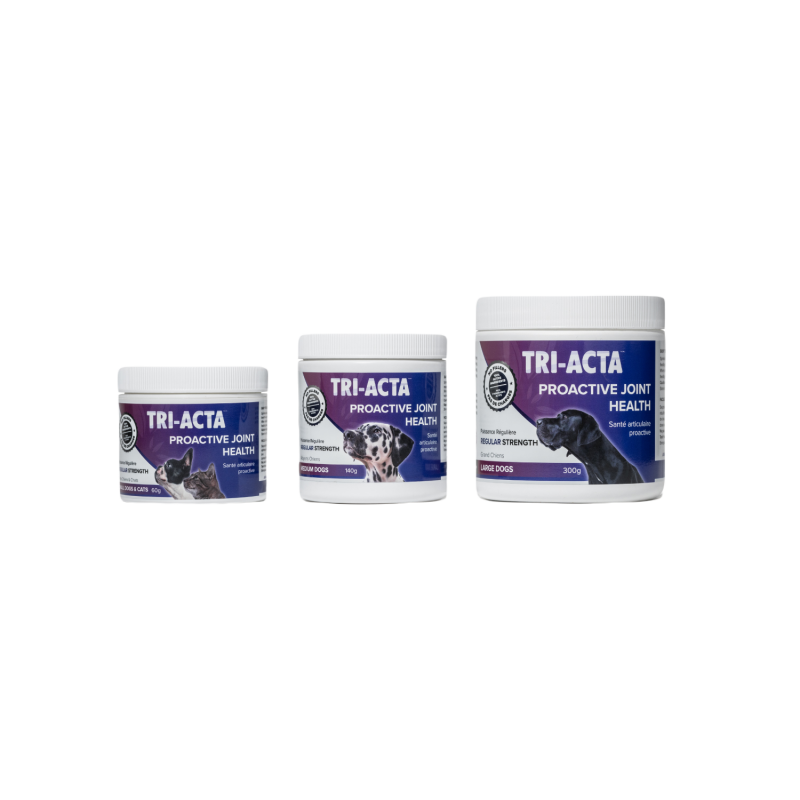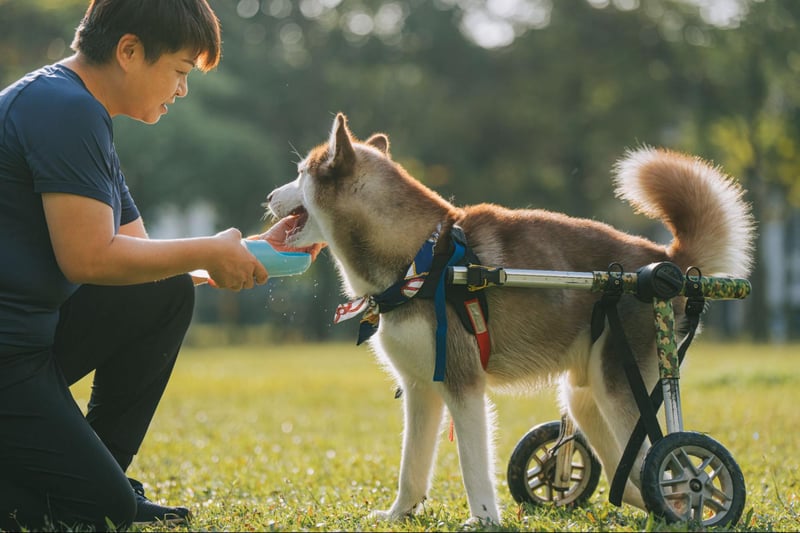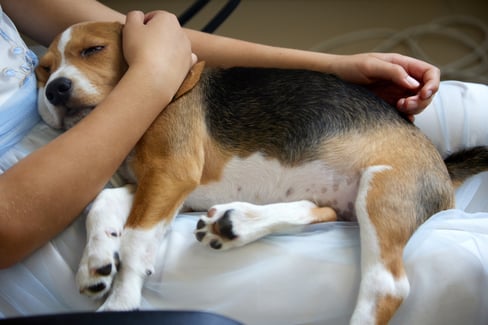Table of Contents
If you notice your pup seems to be struggling with a dog leg injury after a day at the park, you might be thinking, “what gives?”
Although not all back leg injuries are serious, if you notice your dog limping out of the blue, it’s definitely time to take him to the vet. Back leg injuries can sometimes be indicators of big problems, and the sooner you nip them in the bud, the sooner your pup can be back to his playful self.
If you’re wondering what’s going on and why your dog is suddenly limping on his back leg, this guide is for you. Here we’ll check out signs and symptoms, possible treatment, and a whole lot more.
Causes of Dog Limping on Back Leg
Dog limping rear leg can be due to a variety of problems, including injury, disease, and medical conditions. That’s why it’s so important to have a limping or lame dog examined by a veterinarian to determine the underlying cause and provide appropriate treatment.
There are a number of different things that can cause dog back legs to be weak or in pain. A couple of the more common reasons are outlined in the table below.
|
Cause |
Reason |
|
Trauma |
Any trauma, including injury to bones, muscles, ligaments, tendons, or musculoskeletal injuries, can cause limping. These include fractures, dislocations, dog leg sprains, strains, and distensions that cause pain and changes in the dog's normal behavior. |
|
Neurological diseases |
There are many neurological diseases that can affect the motor ability of a dog's hind legs, causing limping. Some of them are disc herniation, degenerative myelopathy, and peripheral neuropathy. |
|
Hip dysplasia |
This disease affects the hip joint and can cause pain and lameness in the hind leg. Sometimes it can be acquired hereditarily. There are many breeds that are predisposed to suffer from hip dysplasia, including German Shepherds, Golden Retrievers, and Labradors |
|
Arthritis |
This degenerative disease affects the joints and causes swelling, pain, and stiffness. It is usually the inflammation of the hip or knee that causes limping in the back leg. Although it is a common disease in senior dogs, treatment for dog arthritis is more effective if it’s treated at an early stage. |
|
Injuries to paws, pads, and nails |
Bumps, scratches, cuts, or abrasions on paws, pads, and nails are minor causes of temporary limping of the hind legs. Although these injuries can be painful, they are usually treatable at home and only lead to mild discomfort for a couple of days. |
|
Infections |
Infectious processes such as osteomyelitis and cellulitis can cause lameness, as they affect soft tissues and bone and cause inflammation and pain. |
|
Growth panosteitis |
There is a condition called growth panosteitis in which the periosteum of the bone becomes swollen due to the accelerated growth of puppies of large and giant breeds such as German Shepherds and Saint Bernards. It usually affects long bones such as the femur and causes limping of the back legs. |
|
Avascular necrosis of the femoral head |
This disease usually affects small or toy breeds such as Yorkshire terriers or miniature Pinschers. The reduction of blood flow and subsequent necrosis of the femoral head can be acquired hereditarily or due to small bone trauma due to the dog’s small size. |
What to Consider When My Dog Is Limping on Back Leg?
When you notice that your little poochie is limping on his back leg, there are some important things to keep in mind.
For starters, assess the severity of the limping and try to identify the exact cause and if your dog is able to support the paw. If your dog is barely able (or definitely not able) to use the leg at all, it’s a good indicator that the injury should be treated by a vet.
On the other hand, if you take a closer look at your pup’s leg and notice that a superficial wound is to blame for the limping, you can apply first aid at home.
You’ll also want to inspect your dog’s leg for any visible lumps, foreign objects in the wound, or deformities. Sometimes, these can be the root cause of your dog’s discomfort, and are better treated by your vet.
Besides physically examining your dog’s leg, you’ll also want to look for signs of pain that usually accompany limping. Some of the most visible signs of pain are:
- Excessive panting
- Crying
- Refuses to have his paw touched, or showing aggression
If you notice your dog is in excessive pain or that the symptoms don’t seem to be getting better, even with first aid, you may need to head to the vet for an x-ray. X-rays and other tests can help rule out serious medical conditions and help the vet get to the bottom of what’s going on.
Besides checking for signs and symptoms when your dog is limping on his back leg, you’ve also got to remember that he’ll need a few days off from his usual romping around. While undergoing treatment, your dog should avoid high-impact activities such as running or playing, as they can worsen limping in the hind legs and prolong treatment time for an undetermined amount of time.
Last but not least, it’s important to remember that you can help prevent many of the conditions that cause limping through a balanced diet, proper exercise, and regular check-ups with the veterinarian. Getting your dog’s vaccine schedule in order can also help you avoid things like infections that could lead to a leg injury.
One important way of helping your dog avoid these kinds of conditions is with a joint supplement. TRI-ACTA Regular Strength has tremendous preventative value for limping and overall mobility. Pairing it with a balanced diet, proper exercise, and those regular vet check-ups can be the key to helping your dog avoid joint and leg injuries.
TRI-ACTA for Pets
A proactive approach for developing and younger adult pets to maintain optimal joint health mobility, minimize inflammation and fend off age-related ailments.

Signs that Your Dog Is Limping on Back Leg
It might not be obvious that your dog is limping in all cases. Dogs have the natural instinct to hide or mask their pain to avoid being seen as weak by other animals and attracting predators, which means that it can be tough to tell if there’s an issue.
You’ll want to watch for behavioral patterns that will give us a clue as to what is going on. These patterns can include:
- Difficulty walking
- Change in position
- Low activity
- Swelling
- Dietary changes
Let’s take a closer look at each of these possible signs that your dog is limping on his back leg.
Difficulty Walking
If your dog appears to be uncomfortable when resting and altering the movement of the limb in an effort to find a position that results in the least amount of pain, that’s a sign that they need a vet visit. Some dogs may stagger when walking or give a sort of kick when resting the back leg.
If you notice these types of behaviors, this quick, two-step method can help you get a closer look at what’s going on:
- Use a snack or treat that your dog likes to encourage him to take a couple of steps. This will give you a better view of the injured paw in action.
- Observe your dog’s movements as he makes his way toward the treat. If he’s in serious pain, he may just stay put rather than try to get the treat.
Watching your dog’s movements this way can make it easier to tell if there’s a serious injury at play.
Change in Position
Another common dog mobility concern with regard to his back leg is if he’s constantly moving around.
To alleviate the pain, your dog may change its posture and place its body weight on his other three legs, which in the long term can also cause considerable joint and muscle wear.
He may do this while standing as well as while lying down, splaying the injured leg out to one side to avoid putting pressure on it.
Lower Activity
Pain and the inability to use all four legs affect your dog’s ability to run around and play as usual. As a result, he may appear to have less energy and a lower desire to play, and opt to rest instead.
Besides lethargy and lower activity levels, a back leg issue can also cause your dog to become bad-tempered, sad, and even aggressive, especially when checking the paw. If you notice your dog behaving this way, you may need to get a vet involved in order to safely check your dog’s leg.
Swelling or Redness
The affected leg may be swollen or reddened, which is an obvious sign that an infectious, irritable, or inflammatory process is causing distress.
If your dog’s leg is swollen or red, you may also notice your pup licking or nibbling at his leg. This is often in an attempt to make himself feel better, although it can actually end up worsening the problem.
Taking your dog to the vet can help you steer clear of these issues. Your vet can also suggest using a cone or another method like a onesie to help prevent licking and nibbling.
Dietary Changes
A dog in discomfort and pain may also change his eating habits.
If you notice your dog doesn’t have as much interest in eating or drinking, it’s a good idea to get him checked out. That way, you can rule out serious conditions, prevent secondary complications like dehydration, and get him back to feeling like himself.
Treatment for Dog Limping on Rear Leg
Once you’ve determined that your dog definitely needs help with his leg, there are a couple of different treatments out there that you can try.
Here are a couple of possible treatments that your vet might recommend if your pup’s back leg needs some TLC.
Physical Therapy

As with humans, physical therapy in dogs refers to the use of rehabilitation and exercise techniques to improve function and movement in pups. It’s usually prescribed to dogs that have suffered an injury or illness that affects their ability to move properly.
Physical therapy techniques may include:
- Strengthening exercises
- Stretching
- Massage
- Hydrotherapy
- Heat and cold therapy
- Laser therapy
- Electrostimulation
These techniques can help improve blood circulation, reduce inflammation, increase muscle strength, and improve joint mobility. It can be beneficial for dogs with a variety of conditions, such as hip dysplasia, spinal cord injuries, fractures, arthritis, neurological diseases, and other conditions that affect the dog's mobility.
With proper care, physical therapy can help improve the quality of life for dogs and increase their ability to move and perform daily activities. Just remember that physical therapy for dogs should be performed by a professional trained in rehabilitation and physical therapy to ensure that the treatment is safe and effective for the dog.
Surgery
While most back leg injuries can be easily treated with OTC meds or physical therapy, some situations are more serious and require surgery. Medial luxating patella in dogs and broken legs, for example, are serious health problems that often warrant surgery for treatment. Luxation occurs when the head of the femur bone slips out of place in the hip socket, while paw breakage occurs when one or more bones in the paw fracture.
The exact type of surgery that your dog will need depends on the severity of the injury and your vet’s evaluation. Following surgery, a period of recovery and rehabilitation will be necessary, which may include physical therapy and medications for pain and inflammation.
If your vet recommends surgery, remember that it’s essential that you follow your veterinarian's instructions throughout the recovery process. That way, you can get your pooch back on his feet in no time.
Anti-inflammatories, Antibiotics, and Painkillers
These medications are also ways that vets help treat pups struggling with limping on their back leg. Each of these medications has a different benefit:
- Anti-inflammatory drugs reduce swelling and pain. They’re most commonly used in dogs to treat issues such as arthritis and other musculoskeletal conditions.
- Antibiotics treat bacterial infections. It’s important to ensure that they are administered at the right dose and for the right length of time so as not to produce antibiotic resistance.
- Painkillers are used to relieve pain in dogs. However, some analgesics can be toxic and should only be administered under the supervision of a veterinarian.
Just remember that the use of anti-inflammatory drugs, antibiotics, and analgesics in dogs should always be prescribed by a veterinarian. This is because it has to be administered according to the specific drug instructions and dosage appropriate for the weight and health of the dog. Otherwise, you could make your dog feel worse rather than better!
One thing to note is that joint supplements such as TRI-ACTA can be a better alternative to NSAIDs. NSAIDs, although anti-inflammatories, have side effects that can be harmful to your pup. As a result, going for supplements can be a great way to get the benefits without the negatives.
Dietary Plan
If the dog limping on the rear leg is caused by a joint or weight problem, getting your dog on diet dog food and implementing portion control may be recommended to help control your dog's weight. In addition, if your dog has a medical condition that affects his mobility, such as arthritis, your veterinarian may recommend a specific diet to support joint health and reduce inflammation.
In addition, in many cases, dietary changes will be accompanied by supplements that help promote muscle and joint health. These kinds of supplements help prevent stiffness, accelerate the formation of new cartilage, eliminate inflammation, and improve the healing process during treatment.
Although there are tons of joint supplements out there, TRI-ACTA is one that’s highly recommended for preventing and treating joint pain due to its active and natural ingredients that help potential joint conditions, like a dog suddenly limping back leg. Key ingredients in this supplement include:
- Glucosamine
- MSM
- Chondroitin
- Hyaluronic acid (available in TRI-ACTA H.A.)
TRI-ACTA H.A. not only addresses the symptoms with dog hind leg limping, but it works to address the root cause as well.
TRI-ACTA H.A. for Pets
Our maximum strength formula is optimally designed to accelerate the formation of cartilage, minimize inflammation, expedite the healing process, and improve joint conditions.

Joint Splint or Brace
Joint splints or braces are often used in dogs to help immobilize a joint and provide support during recovery from injury or surgery. They can also be used to treat chronic conditions, such as arthritis.
A veterinarian should prescribe and place the splint or joint brace, as improper placement can aggravate the injury or lead to re-injury. In addition, the veterinarian should periodically review the splint or brace to ensure that it remains appropriate and effective for the dog.
How Can You Diagnose If My Dog Is Limping on His Back Leg but Not in Pain?

If your dog is limping from the back leg, even if he doesn’t appear to be in pain, it may be a sign of a variety of medical problems. Sometimes, even though they might not look like a major problem, these issues can still be serious and require immediate treatment. That’s why it’s important to act right away anyway.
Since your dog isn’t showing pain, however, you’ll have to do a little bit more sleuthing in order to see what’s going on. Look for changes in position, strange leg movements, and wobbling. All of these are signs that your dog has an issue that needs veterinary attention.
Your veterinarian can check your dog’s posture, gait, and hind limb function and can run advanced tests that can really show what’s going on with your pooch.
Conclusion
When you notice a dog suddenly limping back leg, it can be alarming, to say the least. After all, no one wants to see their canine bestie feeling upset!
Sometimes, your dog limping on his back leg is just due to scrapes and scratches. Other times, however, it could be something more serious like trauma or hip dysplasia. That’s why it’s so important to have your dog checked out and to rule out serious conditions.
The vet can help you come up with a good treatment plan to keep your pup romping around the way he loves. Part of that treatment plan may consist of joint supplements to help strengthen your dog’s limbs and keep him moving around.
One great joint supplement for mobility is TRI-ACTA. This joint supplement has preventative value and can help ensure your pup stays active and mobile for as long as possible. When limping or injury is present, TRI-ACTA HA has therapeutic value to help expedite the healing, so your pup can make a full recovery. Both products feature core ingredients such as glucosamine for dogs that help ensure your pup is able to move around without any issues. If you’re interested in learning more about this preventative measure, check out our FAQ or get in touch with us with your questions.
TRI-ACTA for Pets
A proactive approach for developing and younger adult pets to maintain optimal joint health mobility, minimize inflammation and fend off age-related ailments.

Newsletter Signup
Subscribe to our newsletter to receive the latest news and exclusive offers.
.jpg?height=2000&name=Cliick_Integricare-DISPLAY-REVISEDV2%20(1).jpg)
Proactive & Therapeutic Joint Supplements
When given daily, Integricare joint supplements recover bone and joint injuries faster and help prevent mobility injuries from happening in the first place.









